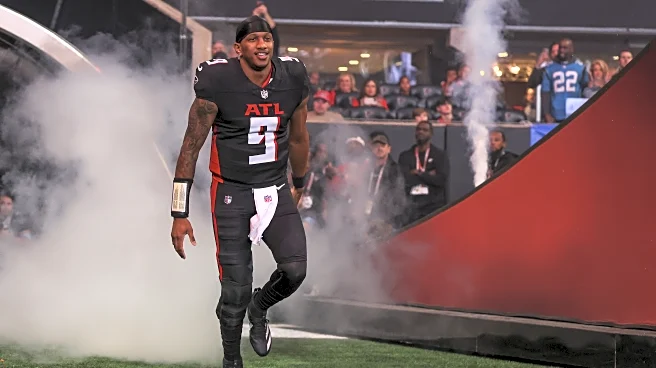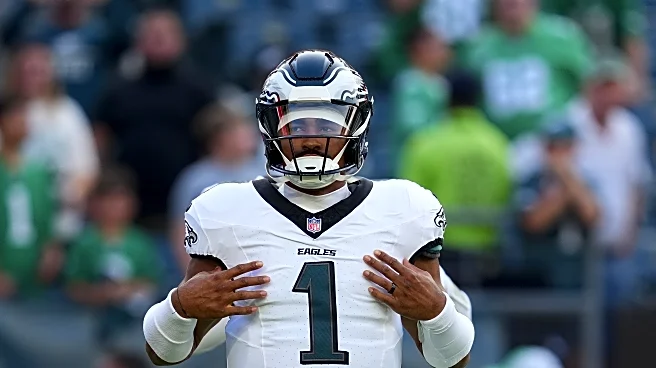What is the story about?
What's Happening?
A recent fantasy football mock draft employed the Zero RB strategy, focusing on wide receivers and tight ends in the early rounds. The draft began with selecting CeeDee Lamb, followed by tight end Brock Bowers and wide receiver Tee Higgins. This approach aims to capitalize on high-value positions while delaying the selection of running backs. The strategy included securing elite quarterback Jalen Hurts and targeting running backs like TreVeyon Henderson and J.K. Dobbins in later rounds. The draft emphasized the importance of positional advantage and flexibility in building a competitive fantasy team.
Why It's Important?
The Zero RB strategy is gaining traction among fantasy football enthusiasts as it allows for a strong foundation in high-scoring positions while mitigating the risks associated with early-round running backs. This approach can lead to a more balanced and resilient team, especially in leagues with PPR (points per reception) scoring. By focusing on wide receivers and tight ends early, managers can secure consistent point producers and adapt to the dynamic nature of running back roles throughout the season. The strategy's success depends on identifying undervalued running backs who can provide significant returns later in the draft.
What's Next?
As the fantasy football season approaches, managers employing the Zero RB strategy will need to stay informed about player performances and potential breakout candidates. Monitoring preseason developments and injury reports will be crucial for adjusting draft strategies and making informed decisions. The strategy's effectiveness will be tested as the season progresses, with managers needing to adapt to changes in player roles and team dynamics. The ongoing evaluation of player value and team needs will be essential for maintaining a competitive edge in fantasy leagues.
AI Generated Content
Do you find this article useful?












